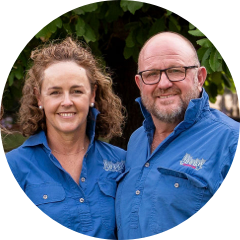Understanding subsoil acidity in cropping enterprises
This project was completed in 2019.
Project Officer
Dr Cassandra Schefe
WHY THIS PROJECT WAS IMPORTANT
Soil sampling done in the region by Riverine Plains and other agencies suggests that subsoil acidity (acid soil at greater than 10cm depth) is becoming a major issue in the region. Subsoil acidity often goes undetected because most pH tests are done in the 0-10cm, with no measurements at depth. If left unchecked, subsoil acidity will reduce the productive potential of the region.
In short: Subsoil acidity is an issue in northeast Victoria. Soil testing indicates a significant portion of samples with low pH values, emphasising the need for targeted lime application strategies to mitigate subsoil acidity's detrimental effects on agricultural productivity and sustainability.
Project focus
The objectives of this project were to:
- Collect more data on the pervasiveness of subsoil acidity in the Productive Plains
- Increase awareness of subsoil acidity as a major soil constraint in the region
- Promote the ongoing use of lime to increase soil pH and suggest options to remediate subsoil acidity, based on other relevant research in the region.
The project also aimed to increase adoption of subsoil sampling for detection and monitoring of subsoil acidity and to increase awareness of the long-term impact of soil acidity on agricultural productivity and sustainability.
Project outcomes
Twelve landholders participated in the project. Each landholder identified two sites per farm, with either contrasting soil types in one paddock or two separate paddocks, in which to have soil tests done. Tests were completed at 0-10cm and 10-20cm for a pH analysis. Most landholders had previously soil tested for pH on a section of their property, and most were aware of the issues surrounding subsoil acidity.
For each site a GPS point was taken, and details collected about the current crop, as well as historic cropping rotations and liming history. This history was important for assessing the level of importance placed on lime and subsoil acidity in the enterprise. A snapshot of aggregated results is presented below.
The results show that 58% of samples had topsoil (0 -10cm) values less than pHCa > 5, while in the subsoil 25% had values less than pHCa5 (data not shown).
Key learnings
Farmer interviews showed there were three main reasons for participating in the project:
- To investigate soil characteristics of newly acquired land
- To test the effectiveness of liming and to see where it was sitting in the profile
- A recognition that subsurface acidity was an issue, but that it had never been addressed properly
Many discussions were had with landholders regarding their cropping and liming history. A common response was that farmers had done little soil testing but if they had the money, they would lime at a conservative rate every three years. Roughly a third acknowledged that liming was important and had an up-to-date liming program. Some farmers were applying lime at variable rate, a third of respondents had new paddocks so didn’t know if they needed to apply lime. The final third of participants have periodically applied lime, but lightly, and didn’t rate its importance highly.
All landholders that were involved with the project were open to applying more lime and many were surprised at their results. Liming practices were very dependent on economics and available cash flow.
Recommendations
Any lime requirements need to be calculated to ameliorate acidity to depth – a low rate may neutralise the top few centimetres of soil, however the slow movement of lime down the profile means that incorporation with a higher rate of lime is recommended where pH values are less than 4.8.
Farmers are encouraged to discuss options with their agronomist to ensure that any cultivation methods are appropriate to their system and soil type, especially in soils with dispersive sodic layers.
Find out more
For further information on this project, please email Riverine Plains Senior Project Manager Jane McInnes at jane@riverineplains.org.au
Project investment
This project was supported by the Goulburn Broken Catchment Management Authority through funding provided by the Australian Government’s National Landcare Program.
Focus areas
MORE ON Soils
Our research enhances food production, increases environmental resilience and improves community connection across the Riverine Plains. See how our research creates impact.
-
Soils
Sustainability
-
Soils
Sustainability
-
Soils
Grains
-
Soils
Sustainability
-
Grains
Soils
-
Soils
Grains
-
Grains
Soils
-
Soils
Grains
-
Soils
Sustainability
-
Soils
Sustainability
-
Grains
Soils
-
Soils
Grains
-
Soils
Climate
-
Soils
Climate
-
Grains
Soils
JOIN RIVERINE PLAINS
Riverine Plains provides opportunities to see new research and innovation, connect with rural communities, and attend informative events.


